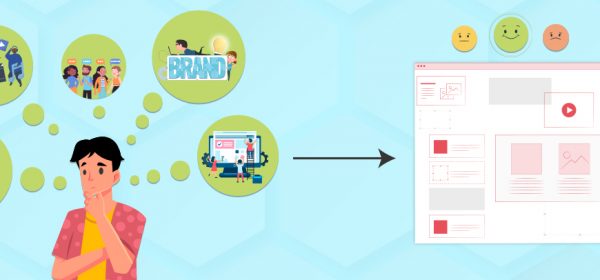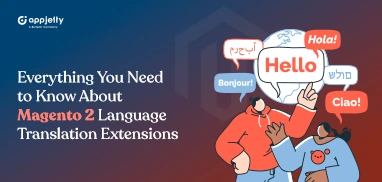Are you a business owner who’s already made it big in domestic markets?
If yes, then what’s your next venture?
Out of umpteen ideas running through your mind, one must surely be of taking your business global. And it’s a great idea without a second thought. But have you braced yourself for effective website translation?
Yes, you heard it right. While people often focus on building personal relationships, localizing marketing efforts and products and whatnot, they often overlook this aspect.
You may be thinking that website language translation is a cakewalk – with Google Translate API. But we are afraid you might be wrong there.
Mere translation using a Magento 2 Multi Language support extension or any other such extension that uses Google Translate API isn’t enough. Understanding what all other details you need to take care of besides simply using an extension or app is also crucial.
Let’s walk you through things to pay attention to when you translate a website for global expansion.
-
Understand Language Intricacies
Every language is different. Translating your website content from one language to another requires you to do a lot more than you think.
Though AI has improved the efficiency of language translators greatly, they still can’t outdo humans. They cannot understand cultural sentiments, references, jokes, idioms or other language intricacies of a country, state, or region. Therefore, the onus is on you to make sure that the final meaning of the translated content remains intact and appropriate.
If you go for an extension like Magento 2 Language Pack, ensure that it shouldn’t simply use Google API to translate content but must have a WYSIWYG (What You See Is What You Get) editor. This will enable you to view and verify the accuracy of translated content and if it’s matching the meaning you want to convey. You should also be able to make edits in any piece of content if it’s inaccurate.
This feature will save you from big translation blunders that didn’t spare even popular brands.
-
Search Engine Optimization (SEO)
Language intricacies affect not only translation but also your site SEO. What several owners do is that they search for keywords in the language they are familiar with. Whereas, one should make sure that they search for keywords in their targeted audience’s languages. This will help you drive traffic from your overseas target countries.
In the beginning, you can also leverage the knowledge from local SEO experts. They will help you plan your content and place local language keywords strategically throughout.
One more thing to understand is that Google is not the only search engine out there. Many countries prefer using search engines other than Google. Some have even built their own to fit their language complexities better. For instance, Baidu and Yandex have over 70% and over 50% of the market in China and Russia respectively.
So, think beyond Google and search for keywords popular in other search engines too.
-
Appearance and UX
You must be thinking what this point has to do with language translation. Let me tell you, it has got a lot to do. How the content on your website appears depends on the language you are translating it to.
Phrases in some languages may end up using fewer words than the original language does. In such a scenario, the look of your final content may appear distorted.
In case a language uses more words, your content may not show up fully on the space you have allocated for it. Especially, in images, if a part of the content doesn’t adjust in the space you allocated, it may go out.
This may confuse the readers and distort your site appearance.
To avoid these distortions and keep your UX engaging, keep future translations in mind.
Take special care of short widgets with images, menus, short category names.
At the end, have a look at the final translated content to ensure that it fits on the page properly.
-
Branding
Branding is also a must-consider factor when translating a website. Your company’s logo color, punch line, or other such things may also impact your target audience’s viewpoint. But it doesn’t mean that you lose the personality of your brand for the sake of translation.
What you need to understand is that the branding for overseas markets may differ from that for domestic markets.
So, with just a few tweaks in your content, you can tailor the image of your brand for international markets.
For instance, Europeans generally don’t prefer overt call-to-action (CTA) buttons unlike Americans. Hence, a softer coaxing approach for European countries like France and Germany may work wonders.
-
Multimedia
images, videos, infographics, and slideshows enhance visual impact. Therefore, don’t focus on translating just web pages. Translate the multimedia content on your site too. Consider using subtitles or voiceover translations depending on your target country.
Also, ensure that your translated content is culturally fit for your target audience. Avoid using cultural references or stereotypical props that may hurt their cultural sentiments.
Final Thoughts
Global expansion of your business requires you to be highly calculative, determined, and optimistic. While all strategies hold importance, you can’t ignore tapping into effective website translation.
However, translating a site using an extension like Magento 2 Language Switcher doesn’t suffice. Translation requires you to take care of language intricacies, local keyword research, multimedia translation, your site’s appearance, and branding. Combining all of them only will lead to your successful global expansion.
Ready to take your business global with language translation?
All product and company names are trademarks™, registered® or copyright© trademarks of their respective holders. Use of them does not imply any affiliation with or endorsement by them.





